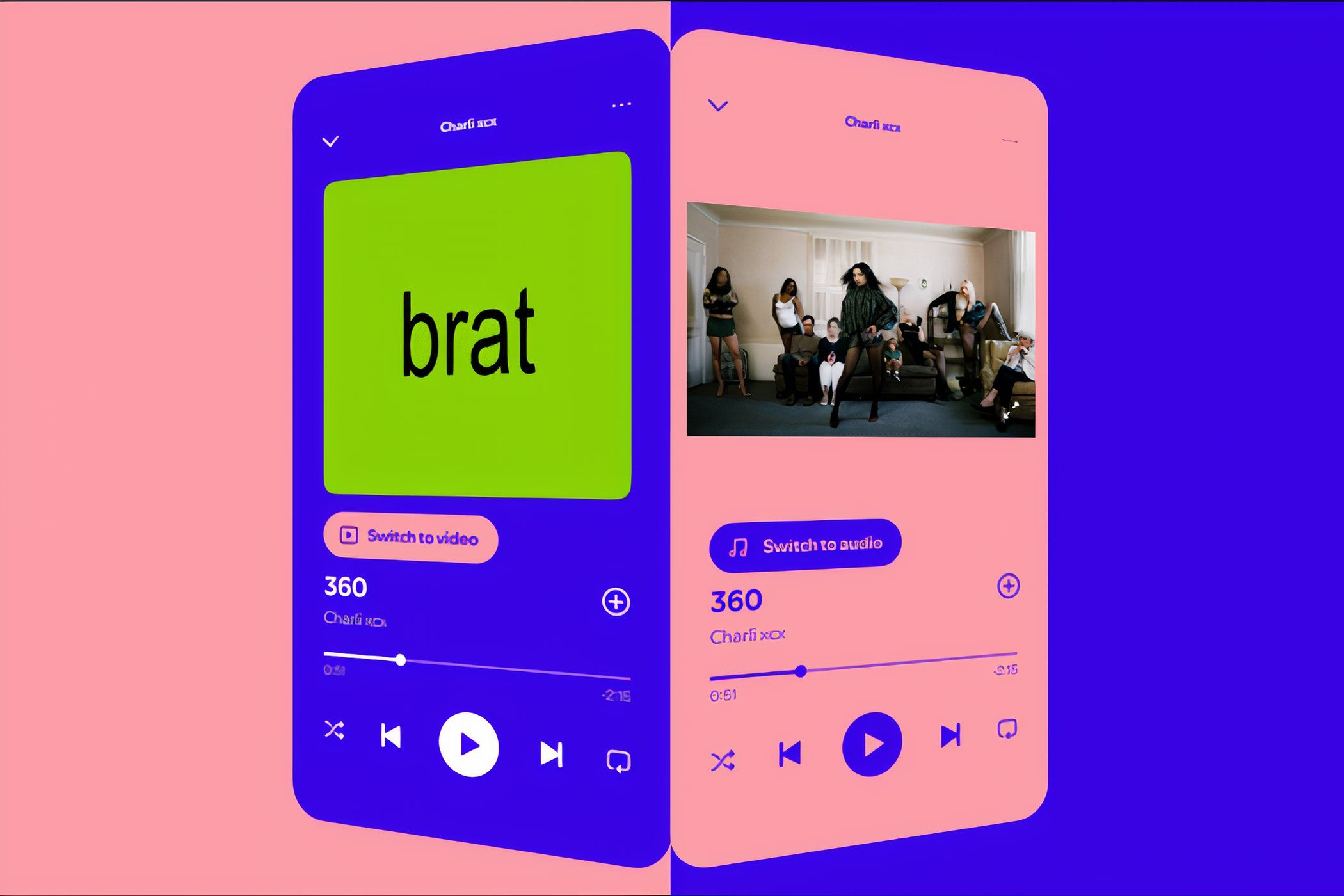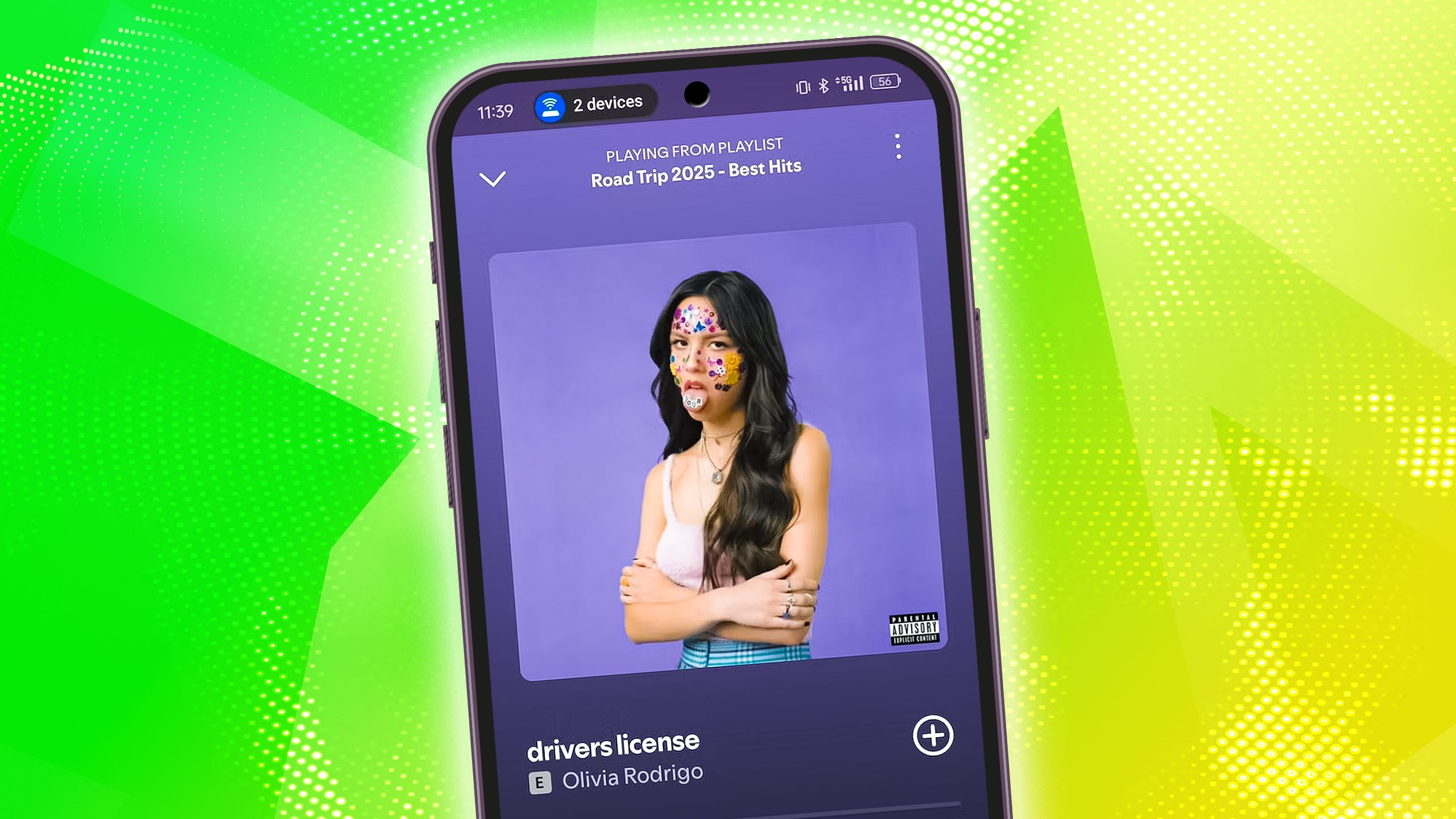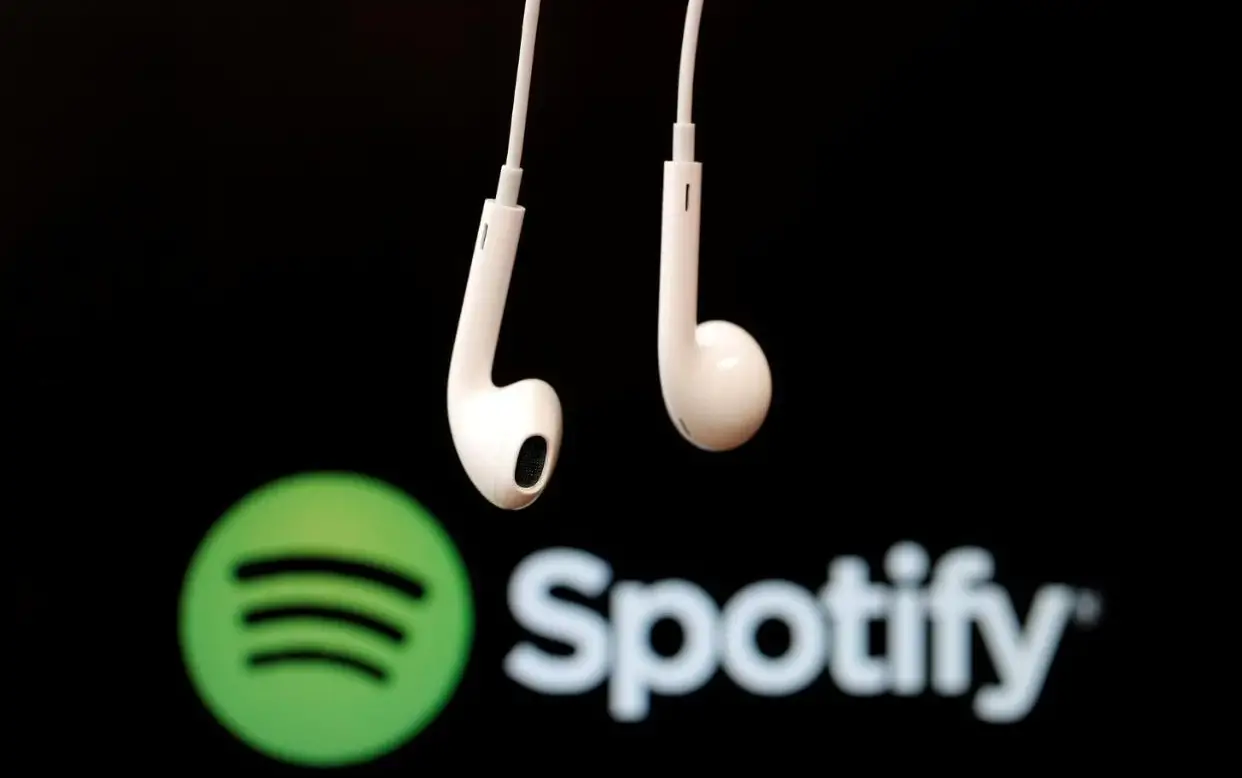Unveiling "Evil Spotify": Myth, Meme, Or A Glimpse Into Digital Discontent?
Imagine settling down with your morning coffee, ready to dive into your favorite tunes, only to open your phone and find an app labeled "evil Spotify" staring back at you. This isn't a scene from a dystopian novel; it's a scenario that has sparked widespread curiosity and concern across the internet. From viral TikTok videos to user screenshots, the concept of "evil Spotify" has captivated audiences, prompting questions about its origins, its purpose, and whether it's a real threat or just an elaborate digital prank.
The intriguing story behind "evil Spotify" blurs the lines between digital folklore and genuine user apprehension. Is it a real virus app, a mysterious concept circulating on TikTok, or merely a reflection of deeper frustrations with the ubiquitous music streaming giant? Let's explore the multifaceted narrative behind this enigmatic phenomenon, dissecting the memes, the myths, and the very real criticisms that have long plagued Spotify itself.
Table of Contents
- The Genesis of a Digital Phantom: What is "Evil Spotify"?
- Beyond the Glitch: Spotify's Perceived "Evils" in the Real World
- The Algorithmic Overlord: Is Your Mind Being Controlled?
- A Deep Dive into Spotify's Core Functionality (and its Shadows)
- The Meme Machine: Crafting Your Own "Evil Spotify" Narratives
- Unpacking the "Virus App" Scare: Fact vs. Fiction
- The Soundtrack of the Shadow: "Evil" in Music
- Navigating the Digital Landscape: Protecting Yourself and Supporting Artists
The Genesis of a Digital Phantom: What is "Evil Spotify"?
The first whispers of "evil Spotify" emerged from a place familiar to many digital anomalies: a user sharing a screenshot. This particular instance involved a user who claimed an app named "evil Spotify" mysteriously appeared on their phone after a reset. The image quickly went viral, igniting a flurry of responses from other users. Some replied with jokes, embracing the absurdity of the situation, while others posed genuine questions, and a significant portion issued warnings, fearing a potential virus or malicious software.
This initial incident quickly spiraled into a full-blown internet meme, particularly gaining traction on platforms like TikTok. Users began to "discover the truth behind evil Spotify memes," with some even claiming to "learn how to download the app." The concept became a canvas for digital creativity, leading to the development of online image makers where individuals could "create your own evil Spotify memes." These tools allowed users to "add text, images, stickers, and effects to customize their memes or use popular templates," further solidifying "evil Spotify" as a cultural phenomenon rather than just a one-off technical glitch.
The core question that remains, however, is whether "evil Spotify" is a real virus app or just a myth. For the most part, evidence points to it being a sophisticated meme or a misunderstanding rather than a widespread, tangible malicious application. While it's theoretically possible for a developer to create an app with such a name, the virality stems from its conceptual intrigue and the existing underlying criticisms of the actual Spotify platform. The fascination lies in the idea that a seemingly benign app could harbor a darker, more insidious side, tapping into collective anxieties about technology and control.
Beyond the Glitch: Spotify's Perceived "Evils" in the Real World
While "evil Spotify" as a specific app might be largely a meme, the term resonates because Spotify, a music streaming company launched in 2008, has attracted significant criticism throughout its existence. These criticisms are not digital phantoms but very real concerns, primarily over artist compensation. This is where the concept of "evil Spotify" takes on a deeper, more metaphorical meaning, reflecting the sentiment that the platform itself, despite its convenience, operates in a way that is detrimental to the very creators it relies upon.
- Tim Miller Husband Photo
- New Box Studio
- Unraveling The Mystery Barron Trump Car Accident
- Braun Electric Company Bakersfield Ca
- Fatman Scoop Energy Drink
The Artist Compensation Controversy
Unlike physical sales or downloads, which pay artists a fixed price per song or album sold, Spotify pays royalties based on the artist's market share. This means artists earn based on "the number of streams for their songs as a proportion of total songs streamed on the service." This model has been a consistent point of contention, leading to widespread frustration among musicians who feel undervalued and underpaid. For many artists, Spotify is an "important gauge" in the music industry, a necessary evil for exposure, but one that often fails to provide a sustainable income.
The sheer volume of music available on Spotify—with access to any of 70 million songs or 3.2 million podcasts—means that individual streams translate into incredibly small payouts. While signing up offers "unlimited songs and podcasts with occasional ads," the revenue generated from these ads and premium subscriptions often doesn't trickle down sufficiently to the artists themselves. This disparity fuels the narrative that Spotify, despite its user-friendly interface and vast library, is fundamentally flawed in its economic model for creators.
Daniel Ek's Billions and the Moral Dilemma
At the heart of the artist compensation debate is Spotify's CEO, Daniel Ek. Critics often point out that "Daniel Ek [Spotify’s CEO] is reaping in billions off of the backs of all the artists that have built this company, and will not compensate the artist for the invaluable work that supports his business and life." This stark contrast between the company's valuation and the struggles of many artists contributes significantly to the perception of Spotify as "evil" in the eyes of many in the music community. It raises profound ethical questions about who truly benefits from the digital revolution in music and whether the current system is equitable.
The Algorithmic Overlord: Is Your Mind Being Controlled?
Beyond financial grievances, another "evil" dimension of Spotify, and indeed many modern digital platforms, lies in the power of its algorithms. Imagine sitting with your coffee, opening Spotify, and wondering: "What if it's not just convenient but an insidious tool controlling your mind?" This provocative thought highlights a growing concern about how recommendation engines shape our tastes, expose us to certain content, and potentially limit our discovery beyond what the algorithm dictates.
Spotify's algorithms are incredibly sophisticated, designed to keep you listening by offering endless streams of music it predicts you'll enjoy. While this offers unparalleled convenience and personalization, it also raises questions about autonomy. Are we truly discovering new music, or are we simply being funneled down algorithmic rabbit holes, reinforcing existing preferences and potentially narrowing our musical horizons? The very efficiency that makes Spotify so popular can, in a more cynical light, be seen as a form of subtle manipulation, guiding our choices without our conscious awareness. This perceived control over listening habits adds another layer to the "evil Spotify" narrative, moving beyond mere financial critique to a deeper philosophical concern about digital influence.
A Deep Dive into Spotify's Core Functionality (and its Shadows)
In a nutshell, Spotify is an app you can download to your phone that allows you to listen to any of 70 million songs or 3.2 million podcasts. Its widespread adoption is undeniable, driven by its ease of use and vast content library. Features like Spotify Connect, where "the device will act as a remote control and stream directly to the connected device," enhance the user experience, making music accessible across various devices seamlessly. The convenience is unparalleled, allowing users to effortlessly switch from headphones to smart speakers or car audio systems.
However, even these core functionalities cast shadows when viewed through the "evil Spotify" lens. The sheer volume of content, while a strength, also contributes to the "needle in a haystack" problem for emerging artists trying to gain visibility. The "unlimited songs and podcasts with occasional ads" model, while free for users, is precisely what underpins the low per-stream payouts for artists. Every feature, designed for user convenience and company profit, can be reinterpreted as part of a system that, intentionally or not, disadvantages creators. The ease of access comes at a cost, and for many, that cost is borne by the artists who produce the very content that makes the platform valuable.
The Meme Machine: Crafting Your Own "Evil Spotify" Narratives
The "evil Spotify" phenomenon truly blossomed in the realm of internet memes. As mentioned, the availability of online image makers specifically for "evil Spotify" memes has allowed the concept to evolve from a simple screenshot into a creative outlet for collective frustration and humor. Users can "add text, images, stickers, and effects to customize their memes or use popular templates," giving them the tools to express their interpretations of what an "evil" version of the app might entail. This democratized content creation has been key to its viral spread.
A TikTok video from 3point (@3_pointshooter), for instance, encourages viewers to "discover the truth behind evil Spotify memes and learn how to download the app," albeit often in a satirical or misleading way to generate engagement. These videos play into the mystery, inviting users to "find out what evil Spotify can do to your device and explore the world of viral music apps." While the "download the app" part is usually a hook for a prank or a conceptual discussion, it highlights how deeply the meme has integrated into online culture.
The Power of User-Generated Content
The memeification of "evil Spotify" is a prime example of how user-generated content can amplify a concept. From casual jokes to more pointed critiques embedded in humorous visuals, these memes serve as a form of digital protest or shared experience. Even subreddits, like "the unofficial subreddit for the famous youtuber 'matt rose'," where users "feel free to submit matt rose related, artwork, memes and questions," become hubs for this kind of creative expression, further solidifying the cultural footprint of "evil Spotify." It's a testament to how online communities can take a kernel of an idea and turn it into a widespread, recognizable symbol of both digital absurdity and underlying discontent.
Unpacking the "Virus App" Scare: Fact vs. Fiction
The initial user report of "evil Spotify" appearing after a phone reset naturally raised immediate concerns about it being a "real virus app." In the digital age, the fear of malware, spyware, or unwanted applications is legitimate. However, as we've explored, the evidence strongly suggests that "evil Spotify" is primarily a conceptual meme rather than a widespread, tangible malicious application. There's no credible, widespread report from cybersecurity experts confirming a virus named "evil Spotify" actively infecting devices on a large scale.
The TikTok video from 3point (@3_pointshooter), while intriguing, often plays into the mystery rather than offering concrete evidence of a downloadable, harmful app. Most likely, any "app" that purports to be "evil Spotify" is either a prank, a fan-made novelty, or, in rare cases, a malicious app that has simply adopted the trending name for camouflage. It's crucial for users to understand that genuine viruses or malware typically don't announce themselves with such a blunt, meme-worthy name. Instead, they operate covertly.
If you ever encounter an app on your phone that you don't recognize, especially after a system reset or unusual activity, the best course of action is to:
- **Do not open it.**
- **Research the app name** thoroughly from reputable tech news sites or cybersecurity forums.
- **Run a scan** with a trusted antivirus or anti-malware program.
- **Delete the app** if it's confirmed to be malicious or unwanted.
- **Change your passwords** for critical accounts if you suspect a data breach.
While the "evil Spotify" meme is harmless fun, the underlying fear it taps into – what an unknown app "can do to your device" – is a valid concern that highlights the importance of digital literacy and cybersecurity awareness in an increasingly app-driven world.
The Soundtrack of the Shadow: "Evil" in Music
The concept of "evil" isn't just confined to a meme or corporate critique; it's a powerful theme that resonates deeply within music itself. It's no coincidence that songs and artists explicitly featuring "evil" in their names or titles appear on Spotify, lending an almost literal soundtrack to the "evil Spotify" narrative. For instance, you can "listen to evil on Spotify," a song by Eminem released in 2024, which might explore dark themes or challenging societal norms. This song, like many others, uses "evil" as a descriptive or thematic element, not necessarily a literal endorsement of malice.
Similarly, artists and bands have long incorporated the concept of "evil" into their identities. You can "listen to Pop Evil on Spotify," an artist with a substantial following of "1.4m monthly listeners," known for their rock sound. Another prominent example is "Bad Meets Evil," an artist with "3.6m monthly listeners," a collaborative project featuring Eminem and Royce da 5'9", whose very name evokes a duality of good and bad. Even a song like "Melanie Martinez · 2023" might, through its lyrical content or thematic elements, touch upon darker aspects of human experience, aligning with the broader concept of "evil" in an artistic sense.
These musical examples demonstrate that "evil" in the context of art is often a metaphor, a way to explore complex emotions, societal issues, or personal struggles. When we talk about "evil Spotify," we're engaging with a similar metaphorical language. It's not that the app itself is sentiently malevolent, but rather that its operational models and perceived impact on artists can be interpreted through a lens of 'evil' – an entity that, despite its apparent benefits, causes harm or injustice. This connection between the abstract concept of "evil Spotify" and the tangible presence of "evil" in music underscores the depth of the public's engagement with this idea.
Navigating the Digital Landscape: Protecting Yourself and Supporting Artists
Whether you view "evil Spotify" as a humorous meme, a symbol of corporate critique, or a cautionary tale, understanding the nuances of digital platforms is crucial. For users, the primary concern should always be digital safety. While the specific "evil Spotify" app is likely a myth, general best practices for app downloads and device security remain paramount. Always download apps from official app stores, be wary of unsolicited links, and keep your operating system and security software updated. If you encounter anything suspicious, remember the sentiment: "Report since Spotify is already evil," implying a need for vigilance and accountability from tech companies.
For those concerned about the real-world "evils" of artist compensation, there are actionable steps to support musicians more directly. While Spotify offers unparalleled access, consider supplementing your listening habits with direct support:
- **Buy Merchandise:** Purchase t-shirts, albums, or other merchandise directly from artist websites.
- **Attend Live Shows:** Live performances are often where artists earn a significant portion of their income.
- **Use Platforms with Better Payouts:** Explore services like Bandcamp, which offer artists a much larger share of sales.
- **Support Independent Artists:** Seek out artists with smaller listener counts (e.g., an "Artist · 340 monthly listeners") and champion their work.
- **Engage Directly:** Follow artists on social media, share their music, and participate in their communities.
Ultimately, the "evil Spotify" narrative serves as a powerful reminder that while technology offers immense convenience, it also carries responsibilities – for the companies that build it, and for the users who engage with it. By staying informed, practicing digital hygiene, and consciously supporting the creators who bring us the music we love, we can navigate the complexities of the digital world with greater awareness and integrity.
Conclusion
The journey through the world of "evil Spotify" reveals a fascinating intersection of internet culture, digital anxieties, and very real industry criticisms. From the viral screenshot of a mysterious app appearing after a phone reset to the widespread creation of "evil Spotify memes," the concept has become a powerful symbol. It encapsulates not only the playful absurdity of online communities but also a deeper discontent with the economic realities faced by artists on platforms like Spotify, where concerns over compensation and algorithmic control persist.
While the "evil Spotify" app itself is largely a myth, the underlying issues it highlights – from data privacy fears to the ongoing debate about fair artist royalties – are undeniably real. Spotify, despite its undeniable convenience and vast library of 70 million songs and 3.2 million podcasts, continues to be a subject of intense scrutiny, with many viewing its business model as "evil" for its perceived impact on creators. This discussion serves as a crucial reminder for all of us to be discerning consumers of digital content, to understand the mechanisms behind the platforms we use daily, and to actively seek ways to support the artists who enrich our lives. What are your thoughts on "evil Spotify"? Share your perspective in the comments below, or explore more articles on digital ethics and the music industry on our site.

More People Can Now Watch Music Videos on Spotify

Spotify's Music Pro plan could support AI-powered audio remixes

Is Spotify Evil for Musical Artists?